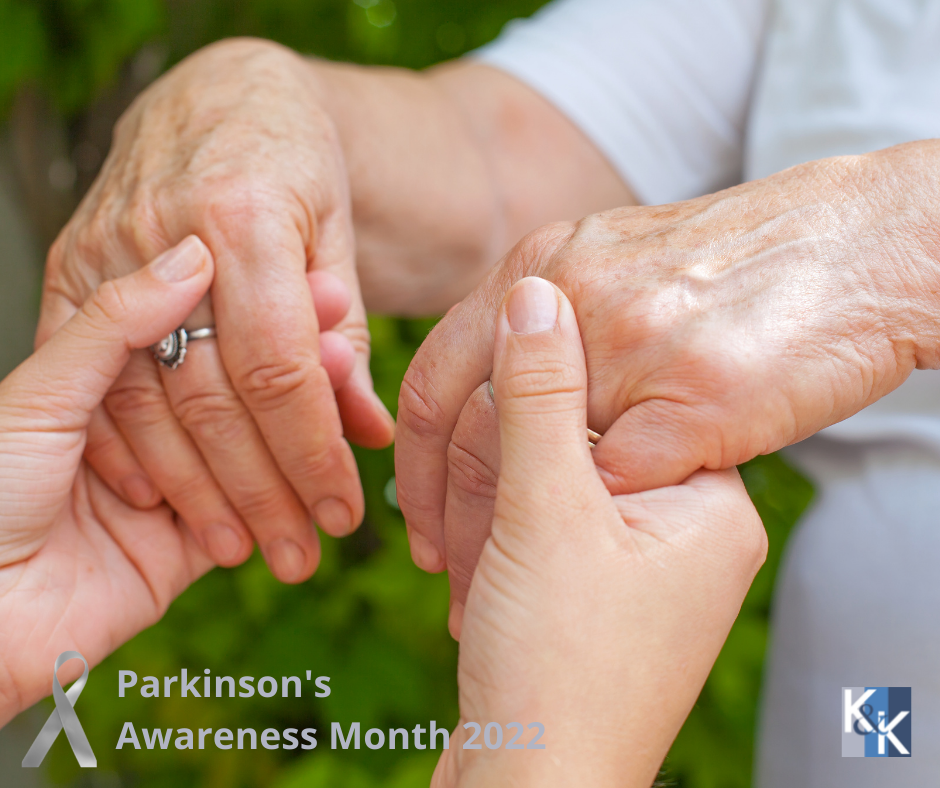
Every April marks National Parkinson’s Awareness Month in the United States. Parkinson’s disease (PD) occurs when brain cells that make dopamine, a chemical that coordinates movement, stop working or die. Because PD can cause tremor, slowness, stiffness, and walking and balance problems, it is called a “movement disorder”, but other non-movement symptoms also can be part of Parkinson’s. PD is a lifelong and progressive disease, which means that symptoms slowly worsen over time.
Parkinson’s disease is usually diagnosed clinically, meaning that a physician looks for the presence or absence of the possible symptoms of Parkinson’s disease by interviewing the patient and performing a detailed neurologic examination. While there is presently no definitive test for Parkinson’s, it can often be identified by a general neurologist, who is trained to diagnose and treat neurologic disorders.
According to the American Parkinson’s Disease Association, 1 million people are living with PD and an American is diagnosed with PD every 9 minutes.
The symptoms of Parkinson’s and their degree of severity are different for every person. Listed below are some of the most prominent symptoms of PD:
Motor Symptoms
People are usually more familiar with the motor (movement) symptoms of Parkinson’s disease (PD). These signs are noticeable from the outside and are used by doctors to make a diagnosis. The three most recognizable motor symptoms of PD are:
- Stiffness (rigidity)
- Slowness (bradykinesia)
- Resting tremor
Not everyone with Parkinson’s experiences all three motor symptoms. Other motor symptoms such as walking problems or difficulty with balance and coordination, may also occur.
Non-motor Symptoms
Non-motor (non-movement) symptoms are sometimes called the “invisible” symptoms of Parkinson’s because you can’t see them from the outside. These common symptoms can affect almost every body system, occur any time in the course of disease (even before motor symptoms or diagnosis) and differ in severity from person to person. Non-motor symptoms can significantly impact the quality of life for people with Parkinson’s. Some examples include:
Autonomic Dysfunction
- Constipation
- Low blood pressure (orthostatic hypotension)
- Sexual problems
- Sweating problems
- Urine problems
Mood and Thinking Changes
Parkinson’s disease can impact how a person feels and thinks.
- Apathy
- Memory or thinking (cognitive) problems
- Mood disturbances
- Psychosis
Other Physical Changes
Parkinson’s can cause other difficulties, as well.
- Drooling
- Excessive daytime sleepiness or fatigue
- Pain
- Skin changes
- Sleep problems
- Loss of smell
- Speech problems
- Swallowing problems
- Vision changes: dry eyes, double vision, and trouble reading
- Weight changes
PD doesn’t have a cure, but there are several treatments that can help ease the symptoms. Medication is the most common form of treatment for Parkinson’s. Other treatment modalities are physical, occupational, and speech therapy, or surgical options.
The symptoms of PD can make it difficult for some people to work. Your insurer may deny your long-term disability claim if it believes your symptoms are not debilitating enough.
If you or someone you know is suffering from Parkinson’s, or any other illness, and you are being denied benefits by your insurer, please call Kantor & Kantor for a free consultation or use our online contact form. We understand, and we can help.

